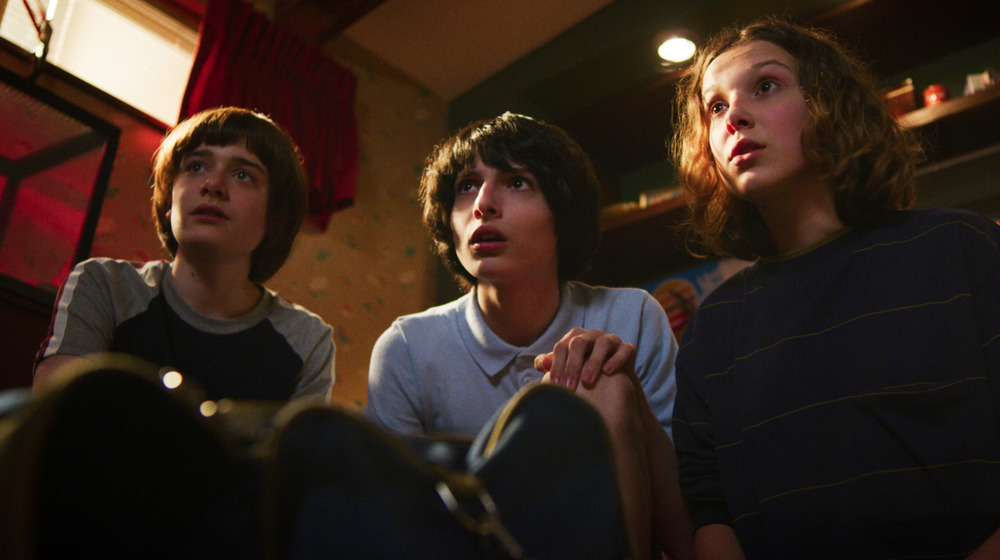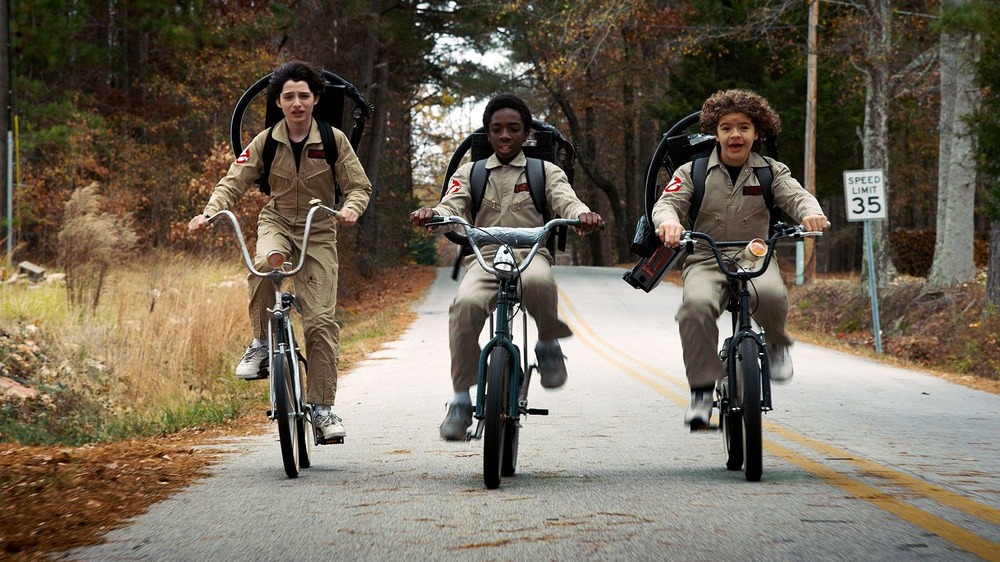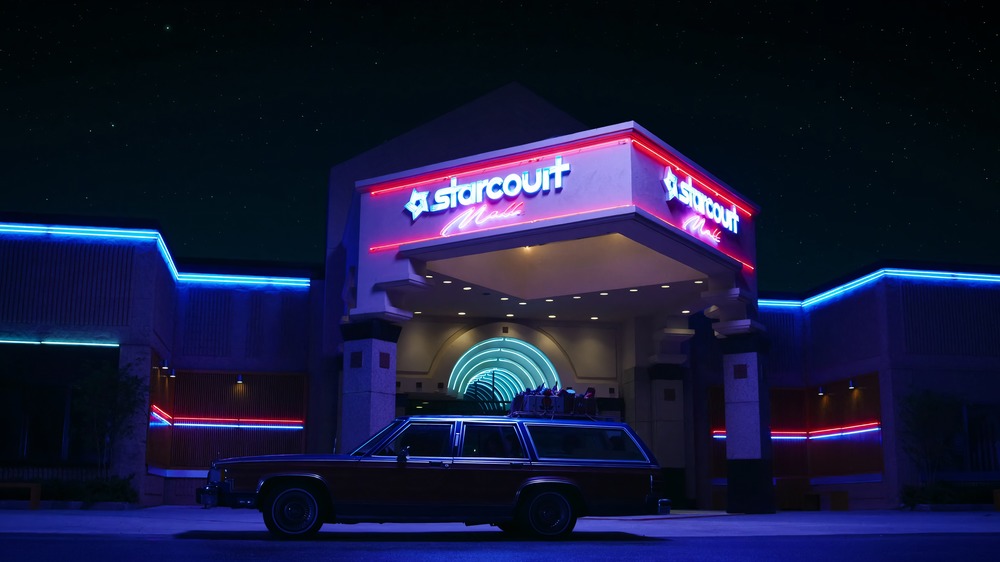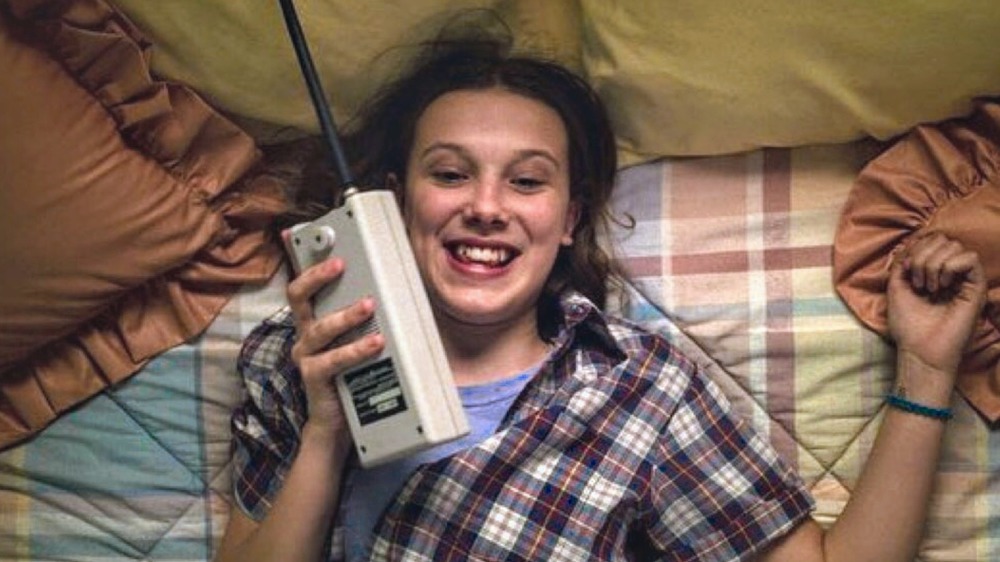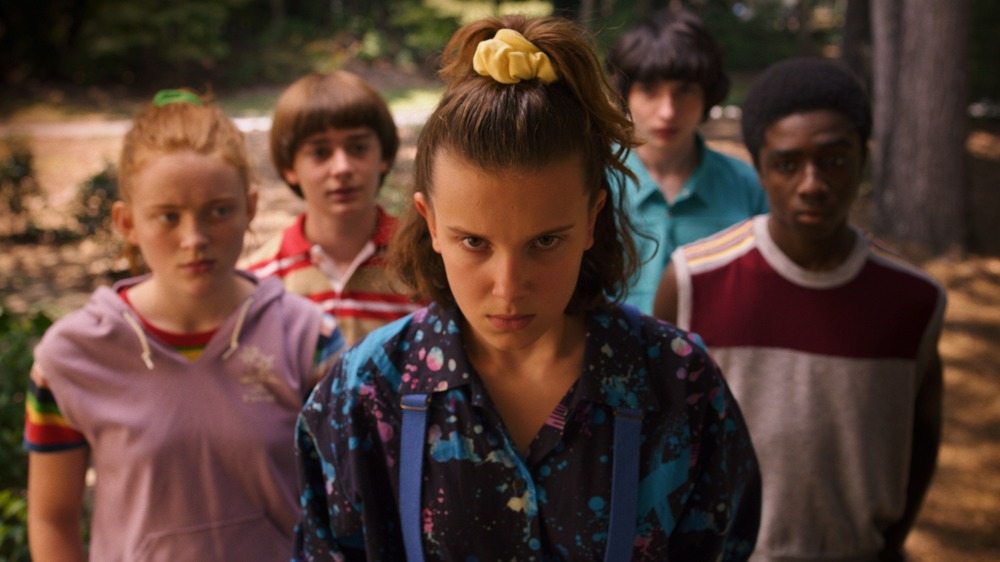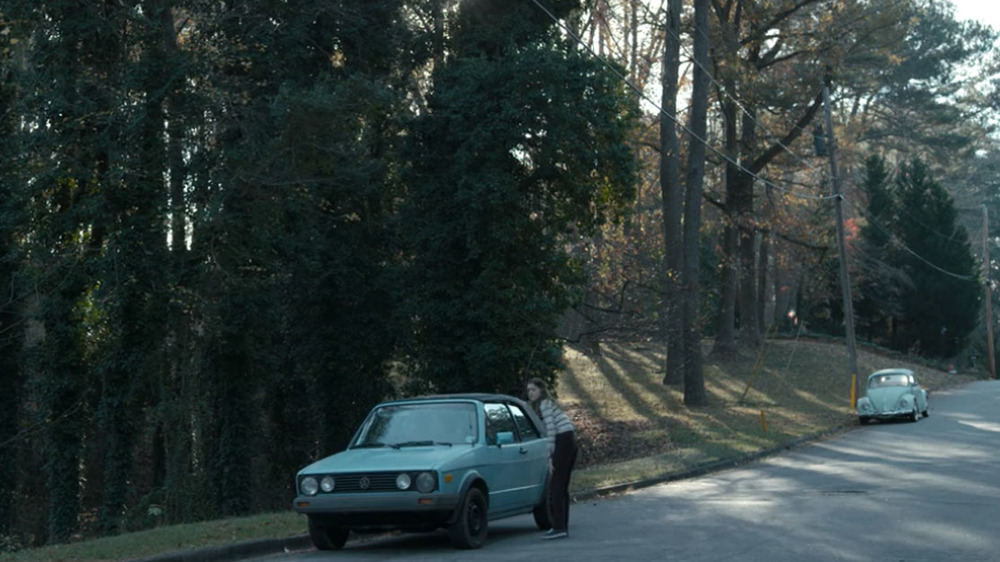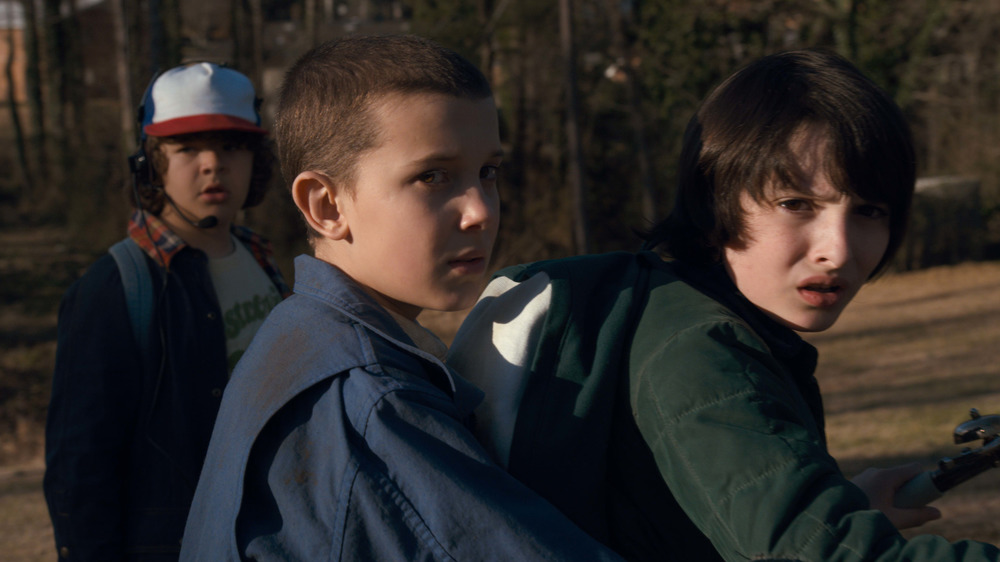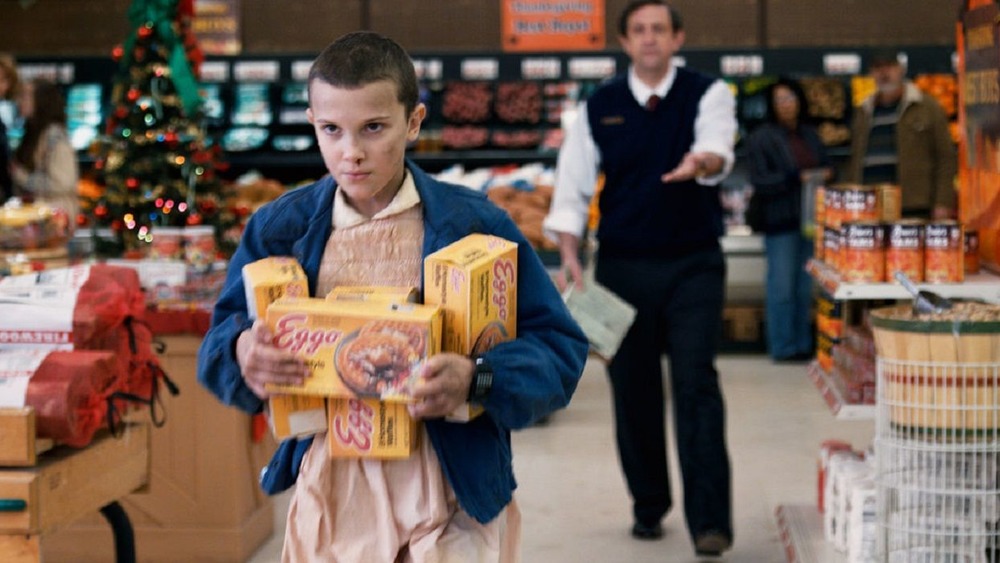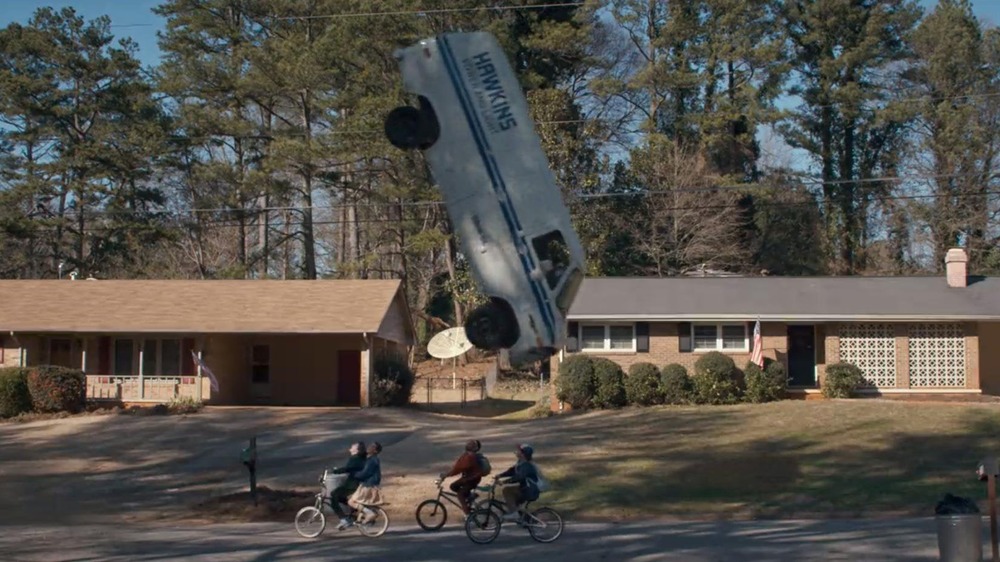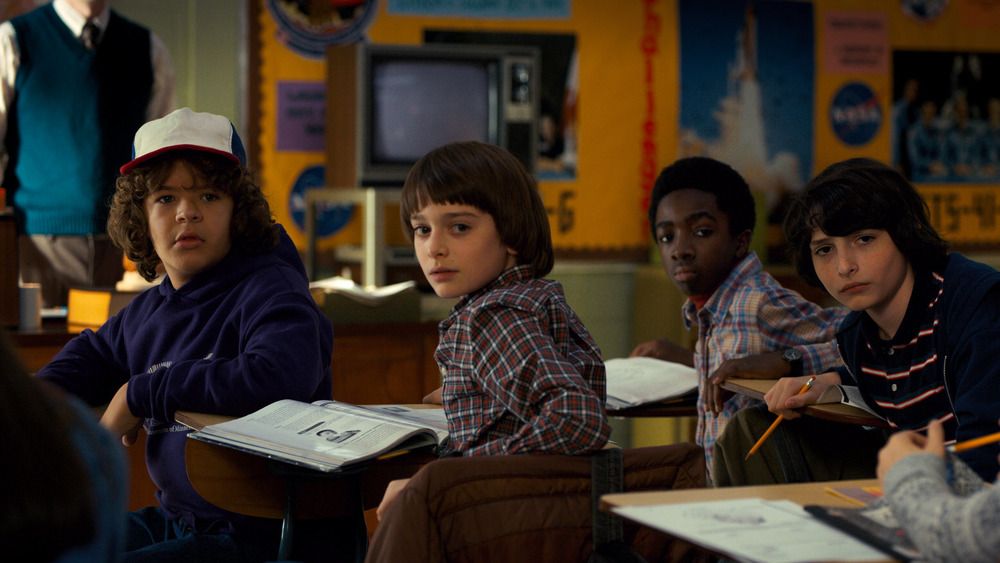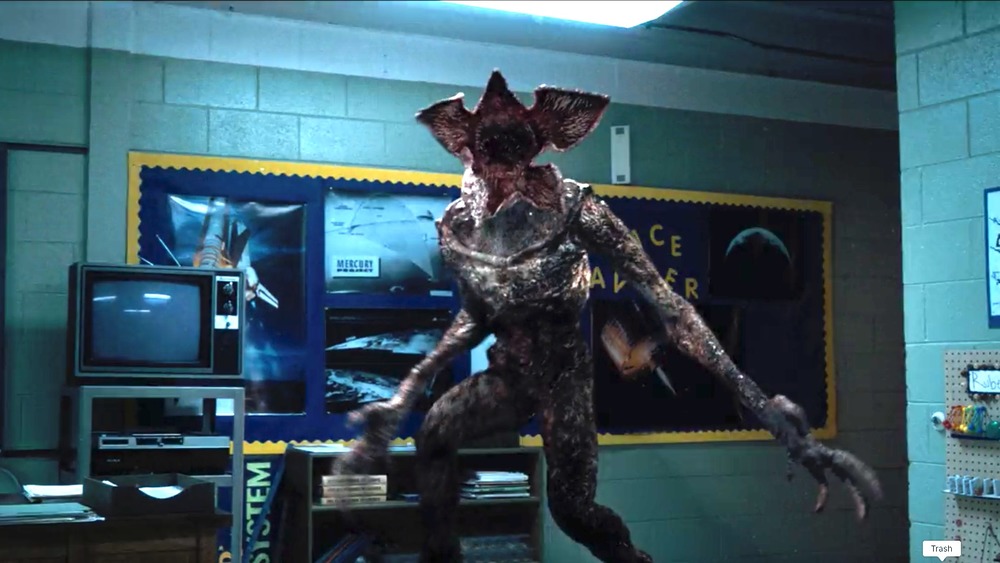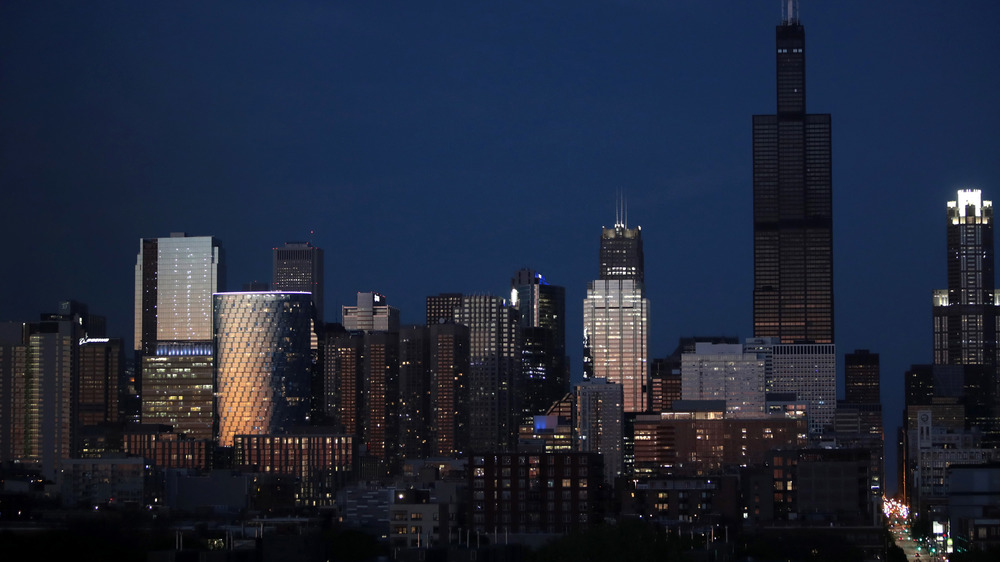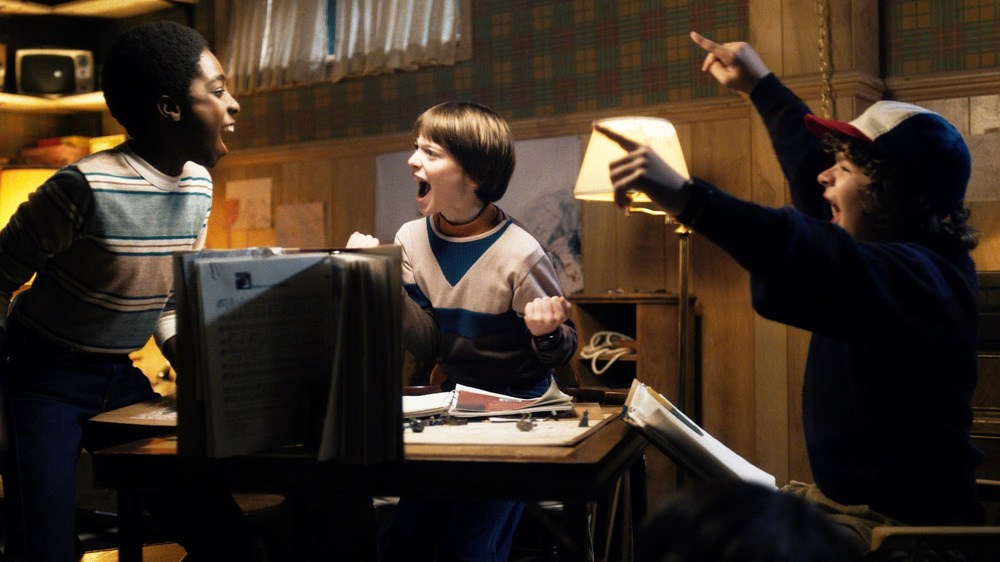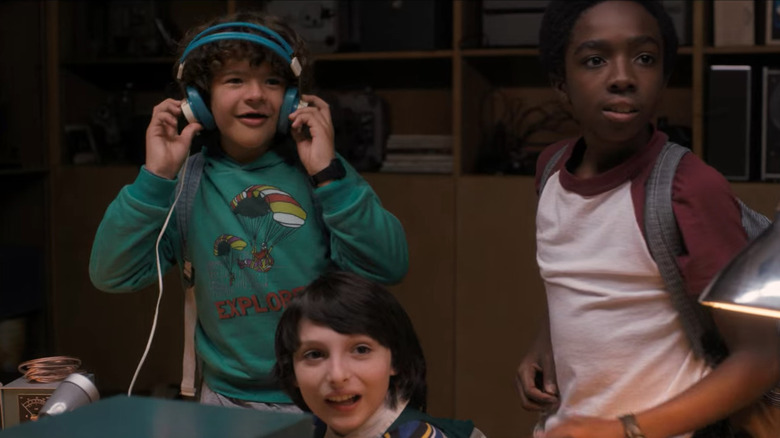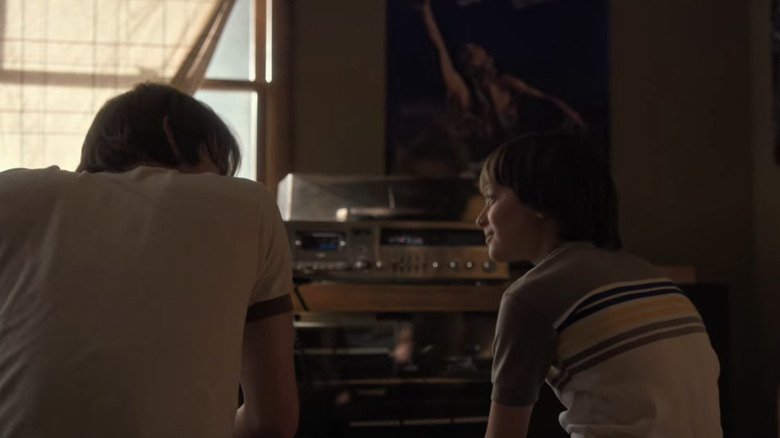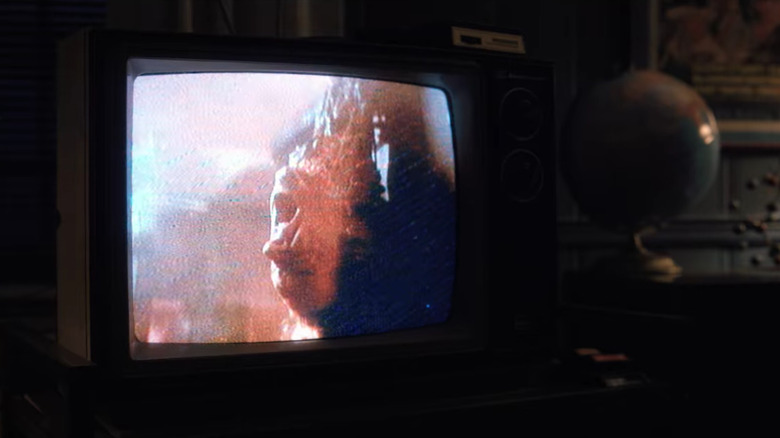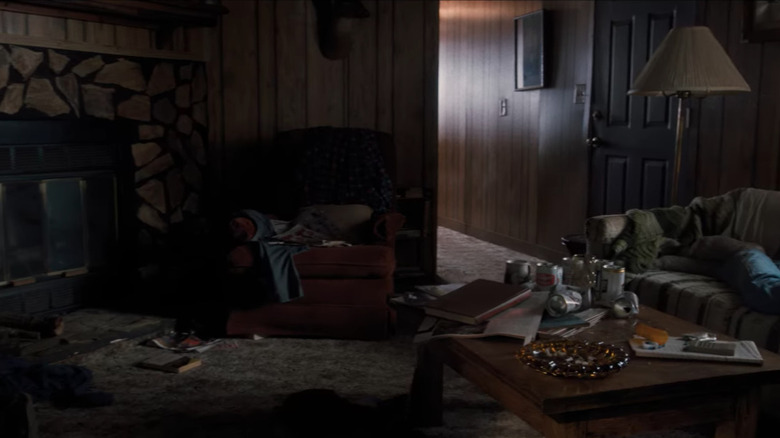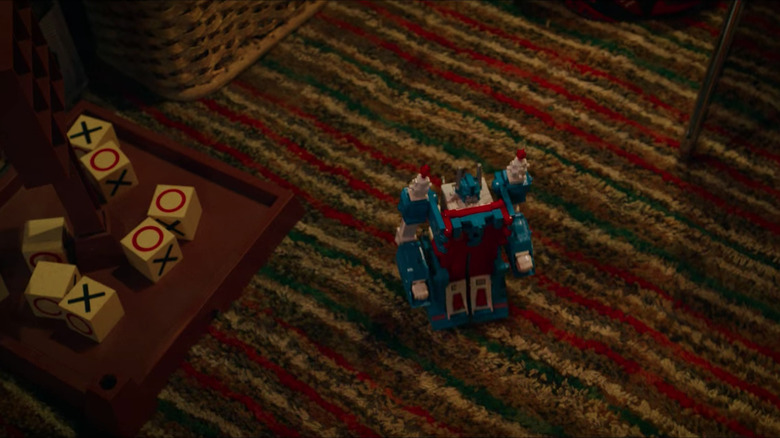What Stranger Things Gets Wrong And Right About The '80s
Stranger Things is, in many ways, a love letter to the 1980s. Fashion, hobbies, shopping, cars — it's got it all. Not only does Stranger Things harken back to the old school coming-of-age movies of the time like Stand By Me, The Goonies, and Lost Boys, but it's deliberately evocative of the past. Set in any other time, it just wouldn't feel the same.
When Stranger Things was first released in 2017, 15.8 million people watched it within the first three days — making it comparable to heavy hitters like The Walking Dead. By the time Season 3 rolled around, the number of active viewers had jumped to over 40 million. Regardless of its accuracies or inaccuracies, one thing was clear — the show resonated with its audience.
Viewers quickly found themselves enraptured not only by the show's endearing main characters, artful writing, and fast-paced plot but also the sheer nostalgia factor. For many, Stranger Things was replete with memories of their own childhood, from video game consoles to the ice cream parlor to the odd interdimensional beast.
But while Stranger Things is known for its attention to detail, there are things that it gets both right and wrong about the '80s.
Wrong: While the bikes the kids ride are accurate, the kids' bike headlights are not
Bike enthusiasts noted that the kids have orange headlights on their bikes, something that wasn't normal back in the '80s. In the '80s, headlights were often pedal-powered and definitely were not orange-tinted.
Some careful deconstruction has convinced some fans that the orange tint comes from filters left on after filming at night. These filters are called "gels." They're used to change the temperature of light to match the environmental lighting.
During night scenes, the temperature (color) of the light often has to be altered so that scenes are both realistic and visible. But this also means that the coloring of all the other lights also needs to be changed. Gels are placed on the lights so they have a more natural tone once the lighting has been adjusted.
If this theory is correct, then someone just forgot to remove the gels from the kids' bike lights — or chose not to. It could be that they looked more visible that way, or it could be that it simply went with the aesthetic. Either way, the orange lights are not period correct, because they simply weren't used during that time.
Right: The Starcourt Mall was deemed indistinguishable from an '80s mall by an expert
Did you get shivers of nostalgia when the kids entered the Starcourt Mall? You weren't alone. Even a historian was unable to distinguish the set from a real mall. Part of this could be because it was once a real mall — the Gwinenett Place Mall, built in 1984.
In the late '70s and early '80s, malls were consuming everything — heightened, capitalist centers that brokered no room for quaint, small-town stores. Even the inventor of the mall wondered if he had gone wrong. All that makes it, perhaps, one of the best settings for a small-town-against-the-universe battle.
While the Starcourt Mall is a real mall, it was long dead by the time the Stranger Things crew found it — they had to entirely rebuild and redesign a whole section. According to the crew, the hardest part of the redesign was figuring out which stores would have been available in 1985. They knew they needed an ice cream parlor, Gap, and a photo studio, but other than that they had to figure out which companies would coexist with each other.
That being said, the photo studio can be argued as a mindful inaccuracy. "Glamour Shots," the quintessential mall photo studio, didn't exist until after 1983.
Wrong: The kids use walkie-talkies that weren't available until 1985
Not only was the TRC-214 Walkie Talkie not available in 1983, but comparable models ranged from $49.95 to $99.95 — $121 to $140 today. Not exactly a child's toy, even if all the kids on the block probably wanted one. It's unlikely that all the boys would have been able to afford TRC-214 Walkie Talkies, even if they had been released two years earlier, which they were not.
Of course, they're worth it for the narrative value.
The walkie-talkies that the group uses in Stranger Things is a nifty way to get around not being able to use cellular phones. In many horror movies and adventures, phones are simply ignored entirely. In Stranger Things, they go out of their way to include a cellular analogue, though it doesn't always work as well. And if they had used cheaper, smaller walkie-talkies, the question might be whether they would even be within range.
Interestingly, since Stranger Things started using these walkie-talkies, they've proven to be popular enough that Radio Shack has a special listing for them. Don't get too excited, though. Radio Shack doesn't sell them anymore — they just sell shirts and iPhone cases. If you want a real TRC-214 Walkie Talkie, you'll need to take yourself to eBay — and probably spend more than they were ever worth.
Right: The apparel of the kids is appropriate to the '80s
Wardrobe did a lot of work to make sure that the apparel of the kids wasn't just period-appropriate but also displayed their personalities and their households. While the clothes might not be real, vintage clothes, they were clothes that would have been worn during that time — and by kids of that general socioeconomic class.
Jumpers, short-shorts, rompers, and bright, almost overwhelming patterns — these are the most iconic parts of '80s dress. And a combination of nostalgia and fandom has the internet searching for everything from Eleven's fun romper to Hopper's date night Hawaiian Shirt.
Perhaps it helps that there are some trends from the '80s that never went away. There are also many now back in style. The heavy-denim look that the kids sport is still a staple of small town America, and Winona Ryder's mom jeans have been cool again for the last half decade. The '80s were a time period where everything in the big city was getting bigger and brighter (as seen during Eleven's dress-up montage), but most rural or suburban kids wore clothing that was pretty similar to what they would wear today.
Although, the shorts were much shorter.
Wrong: Barb drives a vehicle that hadn't been released when the show is set
Including the bikes, most of the vehicles in Stranger Things are period-authentic, with the exception of Barbara's — a 1988 Volkswagen Cabrio that couldn't have existed at the time. But that's likely because the producers were going for a specific look for her car — a little bit cute, a little bit privileged.
Other cars in the series include Hopper's 1980 Chevy K5 Blazer (which is featured heavily throughout), the 1976 Ford Pinto driven by Joyce, and the BMW 733i owned by Steve (likely the 1981 model). In a small, sleepy town, it would be very likely to see vehicles from the '70s and even '60s. But the Stranger Things crew clearly cared not only about authenticity but also about ensuring that the cars really fit the person driving them.
So, why the 1988 Volkswagen Cabrio for Barb? It's a pretty attractive, modern car for someone who would be upper-middle class. Moreover, it's also an easy mistake to make. The Volkswagen did exist during 1983, but the 1985 model differs because it has smaller headlights and plastic-covered bumpers. It's possible that the producers were yearning for the style of the older model and assumed that no one would notice that it was a newer one.
But the internet always notices.
Right: The language and slang of the kids is accurate for the '80s
The kids use a lot of slang from the '80s and earlier, but it only makes sense that children of the '80s would also be using occasional slang from the '70s and '60s. Some of the period-accurate slang includes cool, like, chill, weirdo, mouth-breather, wastoid, and gross.
Of course, cool is effectively an exception, being one of the most popular slang terms in history and likely originating back in the 1930s. (It seems as though "cool" never goes out of style.)
The bottom line — the kids talk exactly like kids in the '80s would have talked, with many words and phrases that were popular in the media of the time. Today, terms like "weirdo" might still be common, but terms like "wastoid" are less so. You'll remember them more if you see movies from that time.
Interestingly, Stranger Things has also had its own impact on the global lexicon, with many people now understanding a basic reference to the "upside down," and more people now knowing what a Demogorgon is than ever before. Whether that will be a useful addition to the cultural zeitgeist remains to be seen.
Wrong: The early supermarket scenes could use a little work
There are two major goofs during the famous Season 1 supermarket scene — Eleven walks by Trident White gum (not introduced until 2001), and two modern cars are seen in the background. These types of continuity issues are rare in Stranger Things but must have been deemed small enough that they didn't merit an edit or a re-shoot.
In terms of continuity errors, these aren't so big. There have been some absolutely tremendous continuity errors in television's history, such as the infamous Game of Thrones Starbucks cup. Continuity specialists are hired to watch filming and identify these types of problems, but who among us actually knows when Trident White Gum was introduced? Especially when Trident itself has existed since 1964.
As for the modern cars, it may simply have been missed — the cars zoom by so fast that it's a blink-and-you'll-miss it. Watch as Eleven first enters the supermarket in Season 1, and you'll see a modern truck blazing behind the glass doors.
Another bit of supermarket trivia? That little recurring reference to Eggo actually boosted Eggo waffle sales. And that is entirely on brand for the '80s.
Right: The '80s was not only the perfect time to ride your bike around the neighborhood — it was the last time you could
In terms of culture, the '80s was the time to ride around your neighborhood with friends. No one really batted an eye at the kids leaving home after school and not coming back until well after the sun had gone down.
This was gone by the '90s. In 1971, 80% of third-graders walked to school alone. That number had dropped to 9% by 1990. In fact, many viewers watched Stranger Things and questioned why today's children no longer have that type of freedom.
It's difficult to say whether the world actually became more dangerous during that period or it just seemed to. The increasing childhood restriction likely emerged from numerous high-profile child murders and an increased fear of child abduction. In the early 1980s, they began to put missing children on milk cartons, introducing worry to the average American home. Shows like Unsolved Mysteries heightened that anxiety.
Some believe that this has created generations of children who are less independent, less likely to take risks, and less likely to succeed. What's certain is that they are less likely to take up a fight against a government conspiracy leading to a shadow realm.
Wrong: In Season 2, the periodic table includes nine as of yet undiscovered elements
A classroom scene in Stranger Things includes elements that wouldn't be discovered until 1994. It's a modern periodic table of elements rather than a period-accurate one. But you're probably wondering which elements weren't discovered until the '90s. You'll be unsurprised to discover that they're not the very well-known ones. Appearing on the list are darmstadtium, roentgenium, copernicium, ununtrium, flerovium, ununpentium, livermorium, ununseptium, and ununoctium.
Say those three times fast. Actually, say those at all.
The periodic table has evolved significantly over time, so much so that it's possible to date a periodic table pretty consistently based on what it looks like. The modern periodic table has been in development since the late 1800s but has undergone many major discoveries since inception. The last officially added element, tennessine, was added in 2010, after a brief stint as ununseptium.
The question of whether "end of the periodic table" might someday be reached also remains an unanswered one. According to Richard Feynman, the end of the periodic table would come after the number 137 — but that theory was one part deduction and one part random guess.
It's complicated: The Demogorgon is a real D&D monster, but the Demogorgon piece used by the kids didn't exist yet
In Stranger Things, the kids start out their long, surreal journey with a simple playing piece — the Demogorgon from Dungeons & Dragons (D&D). Though the Demogorgon piece used is an original, lead D&D piece, it's not a piece that actually existed when the show was set. It is however an accurate piece of the '80s. So this one is both right and wrong. The Demogorgon existed at the time, the piece did not.
In D&D, miniatures are used to depict players and monsters in 3D space. It's an easy way for players to see whether they're within range of a monster — whether they're able to attack it and whether it's able to attack them. They're also tremendously popular collectibles.
As a monster, the Demogorgon displayed a number of unique abilities – interdimensional travel, super strength, telekinesis, blood detection, regenerative healing, and a startling level of durability. The "real" Demogorgon, however, is a two-headed monster with the abilities to hypnotize creatures, beguile, cause insanity, weaken characters, induce rot, and utilize psionic powers. Additionally, with 200 hit points, he is one of the most powerful enemies available.
But since the show doesn't claim that they're depicting a real Demogorgon, the inaccuracy remains just the playing piece.
Wrong: Perhaps the biggest blunder is the Chicago skyline, even if it's only briefly seen
One of the most famous errors in the show involved the Chicago skyline. When Eleven goes to visit the big city, the big city is incorrect. The skyline is a modern skyline rather than a period-accurate one. This one is perplexing, if only because it doesn't take a lot to green screen and correct a skyline.
What are the differences in skylines? Mostly, there's much, much more there. The city has been built up significantly since the 1980s, and while some of the buildings remain the same, the sheer number of buildings has grown. It's possible that the new Chicago skyline was deemed more dramatic. It's equally possible that the composition of the shot made it a lot easier to complete without editing.
Some notable buildings seen in Stranger Things (which wouldn't have existed back then) included the Trump International Hotel & Tower, Two Prudential Plaza Building, and the Blue Cross Blue Shield Tower. And, in addition to the skyline being incorrect, fans noted that the geography within the show made little sense, with a lot of the activity theoretically occurring within the lake.
For a show that prides itself on accuracy and consistency, this is a surprising one. But it could simply be that no one involved in the show was overly familiar with Chicago — you don't know what you don't know.
It's complicated: Whether you'd play D&D with your friends the way the kids did is debatable
In 1983, children around the world would have been playing Advanced Dungeons & Dragons, published in 1977. The second edition of AD&D wouldn't be released until 1989.
D&D is portrayed accurately in Stranger Things insofar as culture goes. In the '70s and '80s, D&D was a popular but nerdy thing to do. Mechanically, however, the way the boys play D&D doesn't always make sense. As an example, they would not have been able to kill the Demogorgon the way that they did based on its stats alone. The Demogorgon has 95% magical resistance and would only take half damage from any magical spell.
But other elements with D&D are correct — people simply don't think they are. For instance, many noted that rolls seem to be done incorrectly, with the Dungeon Master(DM) rolling dice more often than he should. In AD&D, the DM rolled skill checks for all players. This changed as of the third edition D&D, so modern players don't remember this and consider it an error.
Furthermore, most traditional D&D games still have room for "fudging," with DMs fudging rolls and often rewarding players for their actions rather than results. Even if the others didn't kill the Demogorgon, some DMs might have been inclined to give them a break (after all, it's a 200-hit-point beast).
Wrong: Dustin's watch is way ahead of its time
As an avid participant in D&D games, secretary and treasurer of his school's A.V. club, and perhaps the most brainy among his friends, it would be no surprise to find Dustin Henderson wearing the latest gadgets, even if they were just released on the market. However, it's impossible that in 1983 he would own a watch originally released in 1991 (per The Guardian).
That's the case with Dustin's Casio F-91W watch which he flaunted in Season 1, per Showbiz CheatSheet. Our first glimpse of his watch is during his friends' Dungeons and Dragons "campaign" in the first episode. He then wears it throughout other episodes along with other period-accurate clothing and tech, but because the watch doesn't hit shelves for nearly another decade in real life, this must have been a mistake on the producers' part.
It's surprising that the show resorted to an anachronistic timepiece instead of handing Dustin the perfectly character-aligned Castiotron. Originally released in 1974, this earlier incarnation included not only a stopwatch and calendar but a calculator, too! It would've been a match made in nerd-heaven for someone like Dustin. But Casios have long been an infamous go-to timepiece for various types of people, from hipsters to al-Qaida terrorists. It was the preferred watch in terrorist training camps thanks to its water resistance, and its built-in timer lent itself well to improvised exploding devices (IEDs). In fact, Osama bin Laden himself wore one, per The Guardian.
Right: The music hits all the period-accurate notes
Music is a tough element to get wrong in a period piece, especially when your audience made mixtapes in the 1980s. Sure enough, "Stranger Things" didn't mess this one up, and most of the songs featured in the show — along with its opening synth theme — are true to the decade. In Season 1, The Clash's 1982 single "Should I Stay Or Should I Go?" (per WGCU) played prominently as Will Byers' favorite song. It was part of a mixtape his older brother made for him, and the song's lyrics became a source of comfort as he was held hostage by the Demogorgon, per Netflix. And in the very first episode, Toto's "Africa" plays quietly in the background during Nancy and Steve's steamy "study" session (via Netflix). The song was hitting the top of the charts in 1983 and would've been well-known by the characters in the show, per Rolling Stone.
In Season 3, the show features an impromptu musical number, courtesy of the 1984 film "The Neverending Story." That season was set in 1985, which was perfect timing for fans Dustin Henderson and his girlfriend, Suzie, per Inverse. In Season 4, music continues to feature a prominent role as Max Mayfield mourns the loss of her brother through Kate Bush's "Running Up That Hill." The new season gave the song newfound publicity and a resurgence in popularity, allowing it to become the most-streamed song on iTunes, per the New York Post.
Wrong: Mr. Clarke couldn't have watched this classic horror at home
Science teacher and A.V. club supervisor Mr. Clarke is enjoying a movie night with his girlfriend when he receives a phone call from Dustin Henderson about sensory deprivation tanks. After providing the middle schooler with a recipe to build one, he presumably returns to his fun but period-inaccurate horror, John Carpenter's "The Thing." Although the film did hit theaters in 1982—so Mr. Clarke was likely aware of its existence—he's watching it at home. And since his girlfriend offers to pause the movie (per Netflix), it's likely a VHS tape and not a TV airing. The problem is, "The Thing" wasn't offered on home video until a decade later—in 1992, according to Showbiz Cheatsheet.
That's not the only time Carpenter's classic has been referenced in the show. In Season 3, a poster for the movie is shown in the Wheeler family's basement, per Nerdist. And in Episode 7 of that season, Lucas Sinclair pops open a can of the infamous "New Coke." Unlike most people at the time, Lucas enjoys it. He compares the new version of the coke to "The Thing," which is actually a remake of the 1951 classic, "The Thing from Another World." According to Lucas, like New Coke, the 1982 "The Thing" is an improved update of the original (per Netflix).
Right: The interior design is totally the '80s
An episode of "Stranger Things" provides a glimpse into wood paneling's heyday, along with other 1980s crimes against interior design. We first see the ubiquitous wood decor at Mike Wheeler's home in the first episode. His living room walls are paneled with wood, and his kitchen is covered with wood cabinets. Meanwhile, his father struggles to fix the bunny-ears antenna on the TV. As Dustin Henderson walks upstairs, the walls are plastered with a gaudy floral wallpaper (per Netflix). A glimpse into Chief Hopper's home reveals a similar wooden setup. Ditto for the Byers home, with green carpets everywhere to boot (per Netflix).
Wood paneling actually reached its peak from the 1950s to the 1970s and was out of vogue once it became too common, per CBS News. The middle-class Hawkins residents in the show have homes that present a remnant of that style and perhaps couldn't afford to drastically remodel a look that was on its way out.
Wrong: Dustin Henderson must have been the earliest to get this Transformers toy
Dustin Henderson is, yet again, at the center of another period-inaccurate prop. He must have figured out how to use the Upside Down for time travel or something.
In this case, Dustin owns a toy that shouldn't have existed for another year. When he comes home from summer camp at the start of Season 3, Dustin mopes around, thinking his friends have forgotten about him. Suddenly, his toys start moving on their own, startling him. Dustin doesn't realize that his friends are playing a prank on him by using Eleven's powers to move his toys, one of which is a Transformers Ultra Magnus (per Netflix). Like a lot of hard-to-believe elements in this scene, the light blue Transformer shouldn't be there since it's only 1985. The Hasbro Generation 1 toy, which includes an Ultra Magnus cab and car carrier, was released in 1986, per Worthpoint.
Time traveler or not, it may have been worth it for Henderson to save his Transformer. On eBay, a slightly used Ultra Magnus G1 in good condition sells for $115.
